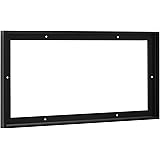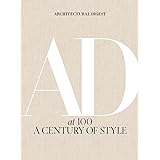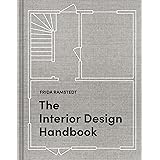Transforming your kitchen into a space that feels both luxurious and enduring doesn’t have to strain your budget. Many homeowners dream of a high-end kitchen aesthetic but are often deterred by the perceived costs. However, with smart design choices and a little insider knowledge, it’s entirely possible to create a kitchen that looks far more expensive than it actually is, designed to age gracefully for years to come.
The accompanying video provides an excellent visual guide to achieving this coveted look, sharing timeless kitchen design ideas that blend practicality with elegance. Building on those insightful tips, this article delves deeper into the principles and techniques that can help you renovate your dream kitchen confidently and affordably, ensuring every detail contributes to a cohesive, high-quality finish without the premium price tag.
Cultivating a Timeless Color Palette for Your Kitchen
The moment anyone steps into your kitchen, it is the chosen colors that immediately set the tone, dictating whether the space feels curated and high-end or noticeably budget-conscious. This initial impression is incredibly powerful, akin to the first notes of a symphony; they either draw you in or leave you wanting more. Selecting the right shades is therefore paramount for creating a lasting, elegant impression.
The Power of Muted Hues
For a kitchen design that resists fleeting trends and remains timeless, the secret often lies in a muted color palette. Think of these as the ‘soft whispers’ of the color world, rather than the ‘loud shouts’ of primary colors. Instead of bold, high-saturation tones that can quickly feel dated, gravitate towards lower saturation options. Neutral stone colors, deep earthy greens, or sophisticated charcoals offer a calming backdrop that allows other elements to shine without overwhelming the space. Bold primary colors, by contrast, tend to be too stark and high contrast, making it notoriously difficult to find complementary elements and often creating an overpowering atmosphere.
Strategic Color Placement: Walls First
If you’re embarking on a kitchen renovation and feel a little uncertain about introducing color, especially darker shades, a clever strategy is to experiment on the walls only. Consider your walls as a canvas that is easy to repaint, allowing you to try out bolder or more adventurous colors without a long-term commitment. Unlike cabinets or tiles, which are costly and time-consuming to correct if you change your mind, wall paint offers an adaptable solution. There’s genuine wisdom in playing it safe with fixed elements like cabinetry; classic choices such as white, stone, navy, or charcoal cabinets age beautifully and effortlessly complement any wall color you choose to incorporate.
Mastering the Two-Tone Kitchen Trend
For those eager to elevate their kitchen design with a bolder approach, a two-tone kitchen scheme offers depth and visual interest. This popular technique involves selecting different colors for your wall cabinets and your kitchen island or breakfast bar, much like a well-composed outfit pairing a strong blazer with classic trousers. The contrast adds a real sense of sophistication and architectural intrigue to the room. If budget allows, investing in paintable cabinet fronts, even if only for your island, is a game-changer. This allows you the flexibility to repaint your island over the years, refreshing your kitchen’s entire look for a mere fraction of the cost of a full renovation.
Choosing Durable and Elegant Kitchen Worktops
After your chosen colors, kitchen worktops command a significant amount of visual attention, serving as a prominent design feature that demands careful consideration. They are often one of the first elements people notice when entering a kitchen, making their selection crucial for both aesthetics and long-term durability. A worktop is not just a surface; it’s a critical component that ties together your kitchen’s look and needs to withstand the rigors of daily life gracefully.
The Gold Standard: Solid Surfaces, Granite, and Quartz
When aiming for a timeless, high-end look that promises longevity, solid surface, granite, or quartz worktops are consistently recommended. These materials are renowned for their durability, resistance to wear, and inherent beauty, mirroring the lasting quality of precious metals. Granite, a natural stone, offers unique patterns and robust strength, while quartz, an engineered stone, provides consistent color and a non-porous surface, making it highly hygienic and easy to maintain. Solid surface materials offer seamless integration and repairability, presenting a sleek, modern finish. While the initial investment might be higher, their resilience and aesthetic appeal prevent costly replacements down the line, ultimately offering excellent value.
Smart Budget Solution: Compact Laminate
For those navigating a tighter budget, traditional laminate worktops can often show wear and tear, becoming scruffy over time. Instead, a compact laminate worktop presents a superior, more durable alternative. This innovative material boasts a much higher density than standard laminate, allowing it to be cut with precision for seamless joints, mimicking the clean lines of more expensive options. Its enhanced resilience means it ages significantly better, resisting chips, scratches, and water damage more effectively. Opting for compact laminate is a clever way to achieve a sleek, sophisticated worktop appearance without the premium price, ensuring your kitchen retains its expensive look for longer.
Enhancing Your Kitchen Cabinetry for a Bespoke Feel
Kitchen cabinets are the backbone of your design, providing both functionality and a significant portion of the visual aesthetic. While standard shaker cabinets are a beloved classic, there are subtle yet impactful ways to elevate their design, moving them from “off the shelf” to “custom made.” This transition often involves a deeper understanding of joinery and finishes, creating a bespoke feel without necessarily commissioning a bespoke price tag.
The Allure of In-Frame Shaker Cabinets
Shaker cabinets, with their clean lines and recessed panel doors, have long been a staple of timeless kitchen design. However, for an elevated, more elegant look, consider in-frame shaker cabinets. This style features a thin frame surrounding each cabinet door and drawer front, creating a distinctive, high-end joinery design that was once exclusive to bespoke kitchen makers. The effect is one of refined craftsmanship and meticulous attention to detail, giving the impression of finely crafted furniture rather than mass-produced units. Happily, the market has evolved, and many affordable kitchen suppliers now offer in-frame designs, making this luxurious touch accessible for a modest increase over standard shaker ranges. This upgrade is undoubtedly worthwhile, transforming an ordinary kitchen into an extraordinary one.
The Subtle Impact of Kitchen Kickboards
Often overlooked, kickboards play a surprisingly significant role in defining the overall character and perceived value of your kitchen. For a timeless, modern country kitchen aesthetic, kickboards that sit proud of the cabinets typically evoke a more expensive, handmade appearance. This design choice creates a sense of solid, furniture-like quality, suggesting bespoke craftsmanship. Conversely, recessed kickboards can sometimes lend a more factory-made look, even in high-end kitchens, to the discerning eye. However, personal preference reigns supreme, as recessed kickboards are often favored in contemporary kitchen designs, where they contribute to a sleek, minimalist aesthetic. The choice largely depends on the specific style you aim to achieve, demonstrating how even small details can profoundly influence a kitchen’s final impression.
Intelligent Kitchen Layouts for Optimal Flow and Space
Designing an effective kitchen layout goes beyond mere aesthetics; it’s about optimizing functionality, ensuring a smooth workflow, and maximizing every inch of space. Half the battle in achieving a beautiful and functional kitchen is strategically placing worktop areas and appliances where they are most needed. This thoughtful approach can dramatically improve daily life in your kitchen, making it a joy to use rather than a chore.
The Floating Island or Breakfast Bar: An Illusion of Space
For kitchens of any size, particularly smaller or darker spaces, fitting an island or breakfast bar with legs can create a remarkable sense of openness. Raising the unit off the ground, leaving a visible gap between its base and the floor, creates an illusion of lightness and increased space. This clever design trick allows light to pass underneath and visually extends the floor area, making the room feel larger and brighter. It’s a subtle but powerful way to enhance the flow and airiness of your kitchen, transforming a potentially cramped area into an inviting and expansive environment.
Rethinking Sink Placement: Beyond the Window
While positioning a kitchen sink directly under a window remains a popular ideal—offering pleasant views and simplifying plumbing on an exterior wall—it’s not always a feasible or necessary solution. Many renovators stress over this, but don’t be disheartened if your sink must face a wall. A sink positioned against an interior wall can become a stunning focal point with creative design. Imagine a beautifully tiled backsplash, integrated shelving for decor or herbs, elegant task lighting, or even decorative paneling surrounding the sink area. As long as the overall kitchen workflow allows easy movement between the sink, fridge, and cooker, a wall-facing sink can be an opportunity for unique and captivating design, adding unexpected character to your space.
Innovative Storage Solutions and Appliance Integration
Modern living often demands creative solutions for maximizing space and integrating appliances seamlessly. The trend of moving washing machines upstairs for convenience, though relatively new in some regions like the UK, highlights a desire for practical, unobtrusive utility. If laundry must be housed in the kitchen or a utility room, stacking washing machines and dryers vertical saves significant floor space, allowing for a handy folding table in between. Furthermore, tall integrated units, which house fridges, larders, and eye-level ovens, create a cohesive and streamlined look when positioned together. Symmetry, with these units balanced on either side of the room, further enhances this sense of order and elegance. Even door openings leading to utility or boot rooms can be disguised as cabinet fronts, offering additional storage and transforming otherwise redundant wall space into functional, beautiful elements. Practical innovations like pull-out drawers under sinks, which make reaching bottles much easier than rummaging in deep cabinets, or large pan drawers that offer superior accessibility over traditional cabinets, exemplify how intelligent design can elevate daily function and simplify kitchen tasks.
The Kitchen Design Mistake to Avoid
While personal preference plays a significant role in kitchen design, some choices can inadvertently detract from a high-end, timeless aesthetic, especially when more sophisticated alternatives are readily available. Identifying these potential pitfalls is key to ensuring your renovation truly achieves its potential.
Moving Beyond the Standard Extractor Hood
One design element that has arguably had its moment is the bog-standard silver extractor hood, often fitted prominently above the hob. While functional, these can frequently break up the visual flow of a kitchen, acting as a clunky interruption rather than a harmonious component. They can also be notoriously difficult to keep impeccably clean, quickly losing their shine. Fortunately, the market now offers a plethora of sleek, integrated alternatives that blend seamlessly into the kitchen’s design. Think about concealed extractor fans that hide behind plasterboard solutions and elegant mantles, or even discreet downdraft extractors that rise from the worktop only when needed. Ceiling-mounted units offer another virtually invisible option. These alternatives allow your beautiful cabinetry and overall kitchen design to take center stage, creating an uncluttered and sophisticated ambiance. While an existing silver hood doesn’t spell disaster for your kitchen’s aesthetic, if you’re starting from scratch, embracing a more integrated extraction method is a simple yet impactful way to ensure a truly high-end, contemporary finish for your affordable kitchen design.











